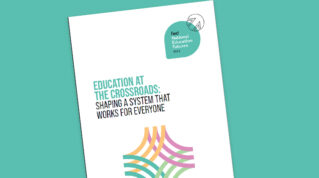The Bolton Impact Trust consists of four alternative provision and special (SEMH) schools. Its executive principal, Paul Hodgkinson is convinced that turning pupils’ educational journeys around after exclusions depends on securing detailed information as soon as they arrive so that provision can be shaped around their needs. Completion of a detailed referral form is therefore a pre-condition of entry. The form includes resource requirements, a pupil profile focusing on strengths and talents, and strategies that have positive impact alongside a detailed risk assessment.
Sadly, Hodgkinson finds that sometimes, schools don’t know their pupils well enough to provide the necessary information – often because pupils have such a history of non-attendance that the information is simply not available. A charity leader told me he faces a similar problem; in some cases, no one can even find up-to-date information on where these invisible children are living.
A former head of children’s social care strategy at the DfE, Ed Reza Schwitzer is all too familiar with these frustrations. He acknowledges that our system is “completely disjointed” and too often results in young people falling through the cracks. “We say the same thing every time,” he told me. “’We need to work together better’. Well, we said that for Baby P. We said that for Victoria Climbié.”
So if everyone agrees this is what we need to do, then how can we put the glue back in the system and map our way to educational equity? That’s the question that a recent roundtable run by the Cambridge Assessment Network was asked, and attendees’ experiences made it clear we can’t afford not to.
There are some relatively low-hanging fruit for policy makers
There are some relatively low-hanging fruit for policy makers who want to make a difference. For example, children’s commissioner, Dame Rachel De Souza has long argued for a unique identifier for each child. That could make it easier to link different data sets together and would go some way to solving the problem Hodgkinson described.
Meanwhile more fundamental shifts in the sector’s architecture are hinted at in the SEND green paper, schools white paper and the children’s social care review. These proposals still need refining, and implementation will be a minefield that could take years to navigate. But if the new education secretary can even get the ball rolling before the next election, they will have achieved a hat-trick of structural engineering that should earn them a legacy to be proud of.
Speaking at the launch of her families’ review this month, the children’s commissioner was right to say it shouldn’t be down to schools and teachers to do everything themselves, and it’s clear that a ‘school-led system’ is never going to stop pupils falling through the cracks. But with the right resources schools can still make a substantial difference.
A 2014 NFER study for the DfE showed that communication and information-sharing can be improved when schools take greater responsibility for meeting permanently excluded pupils’ needs. Schools also have huge potential to act as hubs for family services – an idea floated in the children’s social care review but already being driven forward by many schools who host health workers, housing officers and myriad other services.
The West London Zone provides a particularly impressive example. It was set up as an embedded, community-led resource that would focus on building deep partnerships between families and statutory and voluntary sectors. Schools involved in the programme host link workers who provide vulnerable pupils with a continuous touchstone, bridging the gap between school and home life.
As families come under ever-greater strain, approaches like these and others explored as part of the Cambridge Assessment Network’s Mapping the Way project will need to become the norm.
Whatever structural and funding changes come to pass, there’s simply no time to waste in starting to put the glue back in the system.
And not all of it needs to be applied by ministers.














Your thoughts